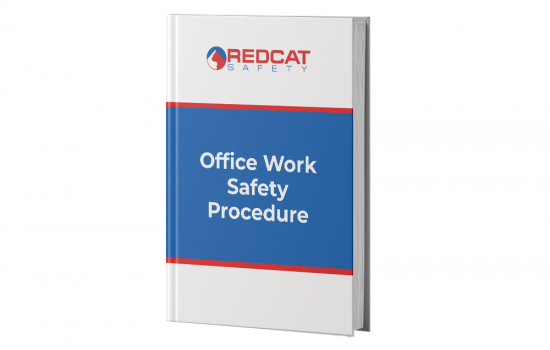Office Work Overview
Office work is one of the most common types of work and while an office may seem like a safe place to work, there are actually many potential hazards that exist. Injuries from office work can include:
- Back injuries.
- Carpal tunnel syndrome.
- Repetitive motion injuries.
- Eye strain, dry and tired eyes.
- Musculoskeletal disorders.
The impacts of working in an office can affect an employee’s health and well-being more than what is commonly thought. It is important to be aware of all the risk factors that contribute to negative effects on a person’s health and well-being resulting in office-related injury or illness.
Office Work Safety Tips
From trip hazards to electrical cords to ergonomics, there are many potential safety hazards in any office environment. By taking some simple precautions you can help create a safe and healthy office space for yourself and your co-workers. Here are some office work safety tips to help you stay safe on the job:
- Use proper posture when sitting at your desk.
- Sit with your back straight and your feet flat on the floor.
- Take frequent breaks.
- Keep your workspace clean and free of clutter.
- Practice correct ergonomics to avoid strain or injury.
- Make use of adjustable equipment and protective equipment.
- Always be aware of your surroundings and potential hazards.
- Route cords so they do not create a slip, trip or fall hazard.
- Report any unsafe conditions and workplace hazards that could lead to workplace injuries.
- Use disease control and prevention protocols.
- Follow all safety rules and regulations.
What About Workstation Ergonomics
Workstation ergonomics is essentially about ‘fitting work to people.’ It is the process of designing or arranging workplaces, products and systems so that they fit the people who use them. Providing a safe and healthy workplace includes matching the needs of the user to the demands of the task. A well-designed workplace or work environment will ensure work efficiency and allow people to work within their physical and psychological capacities and prevent ergonomic injuries. Setting up your workstation is very much about individual comfort and finding the position and placement of furniture and equipment which suits you, the user.
Contents of this Office Work Safety Procedure
- Approval.
- Purpose.
- Scope and Objectives.
- Terms and Definitions.
- Roles and Responsibilities.
- Introduction to Office Settings.
- The Correct Work Posture.
- Workplace Safety and Health.
- Workstations.
- Working Height.
- Chairs.
- Computer Position.
- Printers.
- Keyboards.
- Computer Screen and Mouse.
- lighting.
- Temperatures and Indoor Air Quality.
- Work and Rest Schedules.
- Posture Activity Exercises.
- Useful Tips.
- Related Procedures, Forms and Documents.
- Review Criteria.
- Record Management.
- References.
Why Choose to Buy this Office Work Safety Procedure
This 12-page office work safety procedure template can help you ensure that the office and any associated work environment are assessed, monitored and controlled. The procedure can provide employers and workers with occupational safety and health guidance on how to minimize the risk of occupational injury and discomfort in the office environment. The procedure can be applied to all ‘typical’ office workplaces where office staff are required to work.
After purchasing this template you will be able to:
- Very easily edit and customize the template to create your own office safety procedure.
- Apply your own style, format and brand to the procedure.
- Use it in any industry or sector regardless of the size or type of organization.
Availability and Use of this Office Work Safety Procedure
- This procedure is accessible to you right now by clicking the ‘Buy Now’ button.
- The procedure will be delivered to you in fully editable Microsoft Word format for immediate and full use in your business.
- There are no subscriptions, contracts or ongoing costs.


